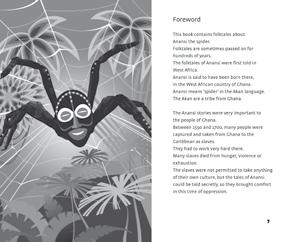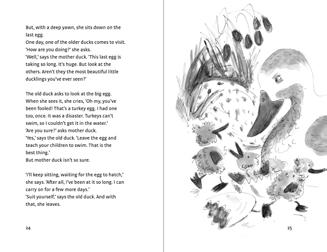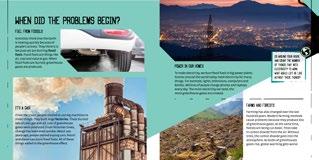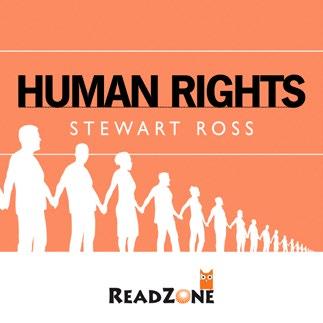BOOKS & DIGITAL
EXCELLENT EASY-TO-READ TITLES FOR CHILDREN, TEENAGERS & ADULTS

Anne Frank in short
Anne Frank - Her life | 104 pages


Anne Frank (1929-1945) is probably the most famous teenage girl from the Netherlands. She is known for her diary. Anne and her family are Jewish. They live in Amsterdam. During World War II, they have to live in hiding in the Secret Annexe.
In Anne Frank, her life you will read about Anne Frank. About her life before she has to go into hiding and her life in the Secret Annexe. About her first love and her fear of being found. You will also find out what happens when her family is discovered. Anne dies in a concentration camp at just 15 years old. She is one of the six million Jewish victims of World War II.
Anne Frank - in short | 96 pages


Anne Frank is born in Germany in 1929. In 1933, the Jewish family moves to Amsterdam. During World War II, they go into hiding in the Secret Annexe. There, Anne writes in her world-famous diary.
What was Anne’s life like? Find out in this easy-to-read book that helps you learn English easily!


Anne Frank - Her life | Sample inside pages



My name is Anne | 112 pages
My diary will be my best friend. Because I don’t have a real best friend. I will call my friend Kitty. I will write lots of letters to her. Oh, I cannot wait to start writing!
When Anne turns 13, she gets a diary. It is not a normal birthday. The world is at war and Anne and her family are living in hiding. Anne writes all of her secrets in the diary until 1 August, 1944. A few days later, the people in hiding are discovered.
Anne Frank - in short | Sample inside pages
My name is Anne | Sample inside pages

Eastern Europe tales
Nasreddin Hodja | 96 pages

Nasreddin Hodja stories were spread by word of mouth. Today, these stories are told over a vast geographic area extending from East Turkmenistan to Hungary and from Southern Siberia to North Africa and have been translated into many languages. This title contains a selection of the bestknown stories including tales about how Hodja deals with his wife’s hot soup, a thirsty village and a thief in the night.

Nasreddin Hodja | Sample inside pages

Anansi the Spider | 72 pages
The story of Anansi the Spider originates from the Ashanti people of Ghana and is one of the best-known of the tales they took with them when they were taken captive during the slave trade. In the Caribbean, Anansi is often celebrated as a symbol of slave resistance and survival. Anansi is a rogue, a mischief-maker, and a wise but lovable creature who triumphs over larger foes.
Anansi the Spider | Sample inside pages




Tales from Eastern Europe | 72 pages

A talking tree, a goat that can outsmart everyone and six brothers with superpowers. This book is full of exciting stories. You will read about dragons and castles, princes and princesses. The fairy tales come from Poland, the Czech Republic, Romania, Bulgaria and Serbia.
Tales from Eastern Europe is written in easy to understand English.
Tales from Eastern Europe | Sample inside pages

Foods we eat
Foods we eat


24 pages
Foods we eat looks at some of the tasty foods we eat every day. With large colourful photographs you can enjoy learning.
Bread | Sample inside pages


Milk and Cheese | Sample inside pages

Fruit and Vegetables | Sample inside pages



Rice | Sample inside pages




Glass | Sample inside pages





Things we use 24 pages


The Things We Use series tells you all about some of the materials that are vital for everyday life. The books tell you how the materials are extracted, grown or manufactured, how they are turned into useful goods and how they are recycled and used again.




Metals | Sample inside pages



Plastic | Sample inside pages








Textiles | Sample inside pages







The Fairy Tales of
Hans Christian Andersen
The Fairy Tales ofHans Christain Andersen
96 pages
The little mermaid wants to know more. Carefully, she swims up to the ship. She looks in through the window. She sees all kinds of beautifully dressed people. But the most beautiful of all is the young prince with his black eyes.
The fairy tales of Hans Christian Andersen (1805 – 1875) are known all over the world. In this book, you will read about a Chinese nightingale, a brave mermaid and a real princess. You will also find out about an ugly duckling and a naked emperor.

The Fairy Tales of Hans Christian Andersen is written in language that is easy to understand.


SOS in the mountains
48 pages

Hans does not like dogs. But because his wife wants a dog so badly, he agrees. They get Yuri. But soon Hans regrets. He finds Yuri dirty and annoying. His wife suggests going to Austria for a week, to the mountains. And there Yuri shows himself from a completely different side...


Lottery ticket
40 pages
Hassan works at a garage. One day the beautiful Assina stands in front of him. She’s coming to bring her car. When she gives him her number, Hassan can hardly believe it. Such a pretty girl! He wants to take her out. But he doesn’t have enough money. That is why Hassan decides to buy a lottery ticket. If he wins the lottery, he’ll call her. But fate has other plans for him...

Enviromental Series | 48 pages

 Written
Written
by Lynn
Hugins-Cooper,Environmental awareness is a series that brings the need for more information on the enviroment to reluctant readers.









Easy to read, illustrated and a book on a very hot topic!

Great Discoveries
The Great Discoveries series is the perfect simplified introduction some of the Human race’s most amazing scientists and how they changed both our world and perceptions.





Each title is told in simple easy to understand language that will feature no more than one to two paragraph’s per page. Visual presentation will be a key element of the high interest in this series and additional “Fact Boxes” will feature on many spreads.
The titles will also include a glossary of difficult words or terms plus an additional section on “quirky/memorable facts” on each discovery.
24 pages
Evolution | Sample inside pages

Fire | Sample inside pages

Gravity | Sample inside pages
Antibiotics | Sample inside pages



Electricity | Sample inside pages

The Atom | Sample inside pages



Light | Sample inside pages
The circulation of blood | Sample inside pages


Great Inventions
The Great Inventions series is the perfect simplified introduction some of the Human race’s most key and exciting innovations. Each title is told in simple easy to understand language that will feature no more than one to two paragraph’s per page.
Visual presentation will be a key element of the high interest in this series and additional “Fact Boxes” will feature on many spreads. The titles will also include a glossary of difficult words or terms plus an additional section on “quirky/ memorable facts” on each invention.
24 pages
Gunpowder | Sample inside pages


Photography | Sample inside pages




Printing | Sample inside pages


The Telephone | Sample inside pages


Steam Engine | Sample inside pages

The Computer | Sample inside pages

The Wheel | Sample inside pages


Aeroplane | Sample inside pages


The story of - Slavery

48 pages
What is a Slave?
Everyone owns something. It’s theirs. It belongs to them. It’s their property. Some people own great things. Like a house or a car. Others only own small things. For example a book, a photo or a hat.
Slavery is when someone owns another person. That person is their slave, their property. Just as they own a dog, cat or horse. A slave is not someone like you or me. They are not free. They can’t go where they want. They can’t choose their job. They cannot decide for themselves where they want to live. Even worse, slave owners can do whatever they want with their slaves. They often punish them, with a lot of violence. And sometimes they even kill them. That has happened a lot in the past. Anyone can be a slave: boys and girls, men and women. Young and old.
The story of - Sugar
48 pages
The words ‘sugar’ and ‘honey’ often appear in English pop songs. In Dutch: sugar and honey. But of course the singers mean something else by it. Sugar and honey also mean sweetheart in English. For thousands of years, English boys have called their girls ‘honey’. But not sugar. That came much later. Why? Because most people didn’t know what sugar was for a very long time. The following fairy tale shows how that changed…
The story of - Sugar | Sample inside pages

The story of Citizenship

72 pages
Citizenship started a long time ago. 2500 years ago. This book tells you all about it.
We are all citizens. Of a country and of the world. That means we are all equal. In real life and before the law. Kings and politicians can rule us, but they are not better than we are. That is the rule of citizenship. Citizenship gives us rights that can’t be taken away. We can vote and be elected. We can have meetings and protest. But we also have duties. To help other people and not hurt them or our country.
The Story of Democracy

72 pages
Sometimes, it seems that democracy is a modern idea. But the first democracy was in Greece, 3,000 years ago. Since then, people have been fighting to keep it. And dictators and kings have tried to do away with it. But it still exists…
Most countries in the world are democracies. That means that people have more power than kings or dictators. Together, the people decide how a country is run. And if they don’t like their rulers anymore, they elect others.
Chapter 4 Assemblies, elections and the law
The first assemblies Democracy is about people governing themselves. This is done by setting up some sort of assembly.
The idea of assemblies (meetings) is not new. For thousands of years, assemblies have been held all over the world.
The first one probably took place before the invention of writing (about 5,000 years ago).

We can’t tell – we have no written records from that time. We know the ancient Greeks and Romans had assemblies. They disappeared when these civilizations collapsed around 1,500 years ago.
Things and moots
Much of northern Europe then fell into the hands of tribes. They often held assemblies to discuss important matters.
These were known as things or moots Iceland’s Althing (now parliament) has been held since the year 930.
The story of Equality

72 pages
Real equality is difficult. But humans have been fighting for it for thousands of years.
In principle, we know we are all equal. But reality shows us this is not true. Often, men earn more than women. White people have more opportunities than people who are not white. Rich people are more powerful than poor people. We don’t listen to children very well. And in some countries, you are worth less when you are gay.
The story of Human rights

72 pages
The King of Babylon was the first to write down human rights. That was 3,750 years ago. From there, the idea of human rights spread everywhere.
Most religions in the world are based on ‘the golden rule’: treat others as you want to be treated. Human rights are about the same thing. They are made to make sure that everybody in the world has a fair go. That their rights are respected. That there is no torture, no slavery and that people are free to say what they want. That there is freedom of religion and freedom to protest.
Inhoud Chapter 1: The Tyrant Hippias
Chapter 2: Athenian democracy

Chapter 3: What is democracy
Chapter 4: Assemblies, elections and the law

Chapter 5: Republics and parliaments
Chapter 6: Three revolutions
Chapter 7: The advance of democracy
Chapter 8: Democracy’s problems
Athens was probably the first place in the world to have a democratic system of government.
That’s why we honour the first marathon runner. We live in democratic countries.
Democracy in Athens
Cleisthenes is known as the “Father of Athenian Democracy”. His thinking went like this: all communities (e.g. schools, cities, countries) need rules (laws); without laws, you have chaos: everyone does what they want theft, murder, etc. laws are made by the person or people in charge (e.g. the head teacher, the mayor, the government) these laws tell people what to do; if they break the law, they’re
14 15
Cleopatra and her secret

x pages
Cleopatra is still very young when her mother dies. She realizes that her destiny will be to marry her brother or father, because her family is supposed to rule Egypt forever. Cleopatra makes an important decision: she herself will take the throne one day.
• Historical stories in simple English
• Reading level A2
• A fourteen-year-old is the main character
• Perfect material to make history lessons lively
Arsène Lupin - Gentleman thief
x pages
Well-known easy to read introduction to the rich literature of the world.
The popular Netflix series with the famous burglar Arsène Lupin led to a renewed interest in these French classic short stories about a gentleman thief. Modern and easy-to-read!

The Great Gatsby
x pages
Well-known easy-to-read introduction to the rich literature of the world.
Set in Jazz Age New York, it tells the tragic story of Jay Gatsby, a self-made millionaire, and his love for Daisy Buchanan, a wealthy young woman whom he loved in his youth

1984
x pages
Well-known easy to read introduction to the rich literature of the world.
At last, the famous novel 1984 in an easy-to-read version! The novel about truth a nd facts within politics, and the way they’re constantly manipulated, and therefore thematically still very actual.

